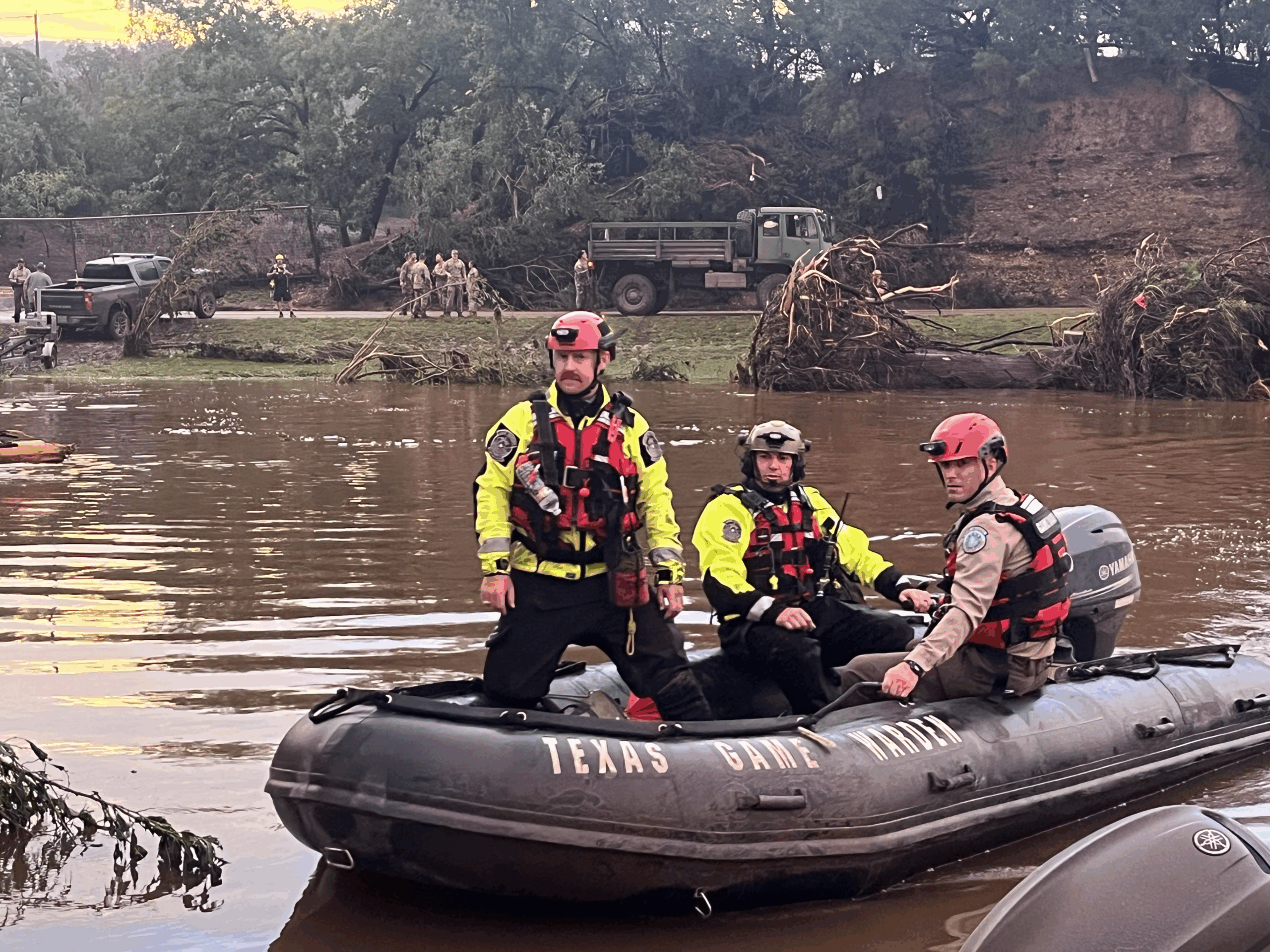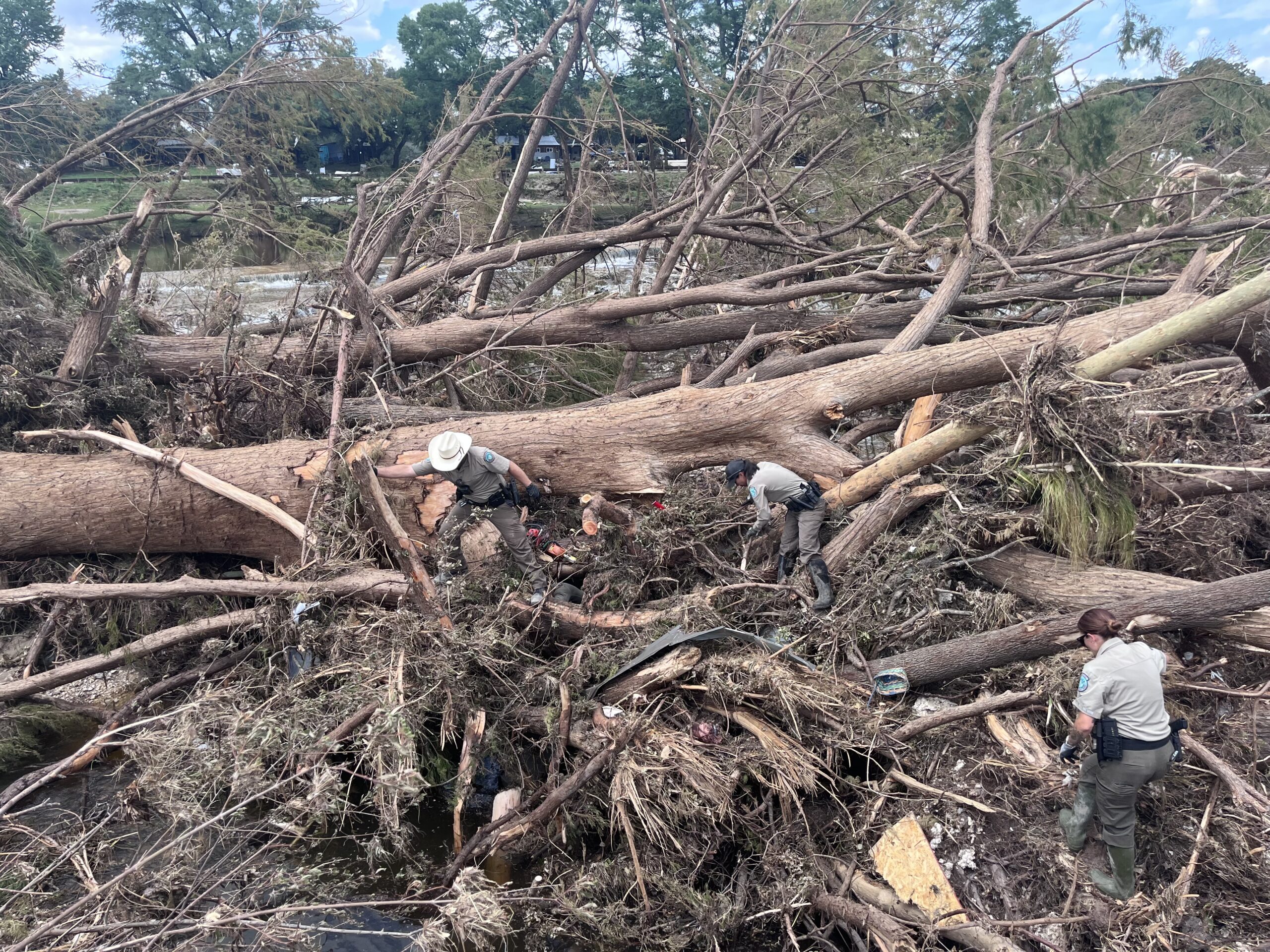When historic flash floods swept across Central Texas on July 4, 2025, first responders across the region sprang into action. Texas Game Wardens, local fire departments, sheriff’s offices, DPS, and rescue teams mobilized to confront a disaster of staggering scale. Rain fell in relentless sheets, rivers surged over their banks, and entire towns were cut off within hours. Over the coming days and weeks, we’d come to realize that at least 135 Texans had lost their lives—a profound, devastating loss that could have been much higher if it weren’t for the urgent, coordinated frontline efforts of emergency responders.
Texas Game Wardens played a critical role in the effort. As fully commissioned peace officers with statewide jurisdiction, they bring a rare blend of law enforcement authority and search and rescue expertise. Trained to operate in the harshest conditions and equipped with boats, helicopters, K-9 units, and specialized tactical teams, they are often the first on the front lines when Texas faces natural disasters.

During the disaster, more than 375 game wardens and 475 specialized assets were deployed across multiple river systems, from the Guadalupe to the San Gabriel. They conducted 34 water rescues, evacuated 434 individuals, and assisted countless others stranded by rising water. They also provided early logistical support to local agencies and DPS in what became one of the largest mobilizations in the division’s history.
“It was an all-hands effort,” said Capt. Logan Griffin. “From swift water boats to boots on the ground, we were fully engaged. But it wasn’t just us—it was a true team response across agencies.”

Behind those numbers are stories of courage, quick thinking, and extraordinary teamwork. One of the most dramatic missions unfolded at Camp Mystic, a summer camp near Hunt that was suddenly cut off by floodwaters. With no power, no cell service, and hundreds of children and staffers stranded, Texas Game Warden Dusty Jansky was airlifted into the camp by a TPWD helicopter along with a swift water rescue technician. Rain was still falling and debris choked every road.

His task was to provide critical communications and situational awareness while guiding efforts to evacuate campers. Working with camp staff and other responders, Jansky helped coordinate the air evacuation of more than 160 campers to reunification centers. Game wardens transported another 170 by vehicle once debris was cleared from the roads.
For Jansky, the day was a blur of tasks: running communications, relaying information to ground teams, and directing resources where they were needed most. He worked nearly 20 hours before collapsing into bed after midnight. “It’s a day I’ll never forget,” he said. “We can wash the mud off our trucks and out of our uniforms, but we’ll never get it out of our hearts or off our minds.”

The flood didn’t just test the training of Texas Game Wardens—it also tested their equipment. Much of what they relied on came through Texas Parks and Wildlife Foundation’s S. Reed Morian Gear Up for Game Wardens program. In the days immediately following the disaster, Gear Up worked quickly to replenish what had been lost or damaged. Hundreds of new Sitka boots, gloves, and safety glasses, and dozens of prop blades for swift water boats were rushed to the Kerrville Law Enforcement Office, while additional equipment was ordered to keep pace with ongoing operations.
“Gear Up allows us to evolve at a much higher speed,” Griffin said. “This program puts the right tools in the hands of game wardens when they need them most.”
Since its launch in 2017, Gear Up has provided more than $7 million in equipment for Texas Game Wardens. The July 4 floods proved just how vital that investment has become—not only for the game wardens who risk their lives, but for the Texans they protect.
As Col. Ron VanderRoest, head of TPWD’s Law Enforcement Division, told lawmakers after the flood, “The dedication of our Texas Game Wardens reflects our commitment to public safety, resilience, and service.”


